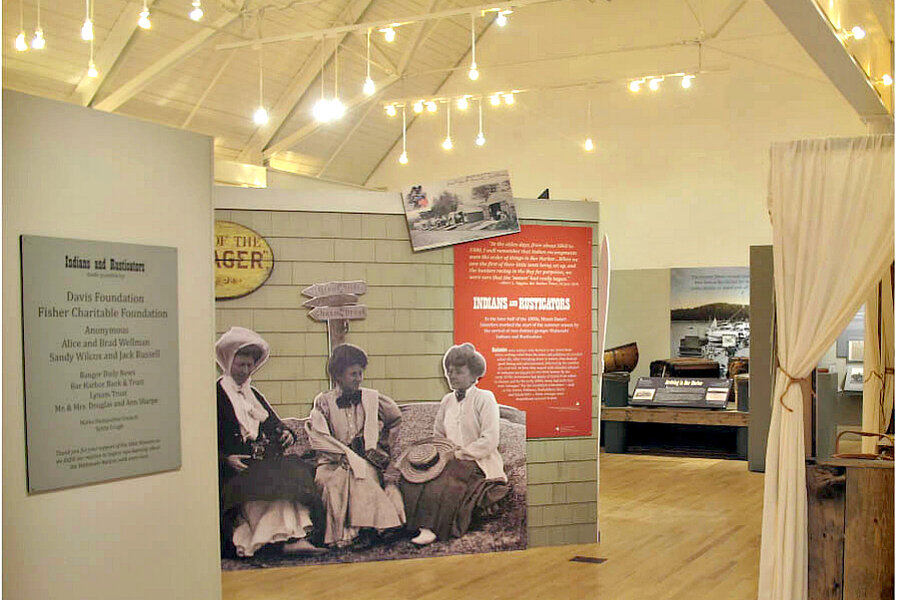Abbe Museum takes 'greening' seriously
Loading...
| Bar Harbor, Maine
The Abbe Museum tells visitors about the culture and history of the native American peoples of Maine.
So it made sense to launch “Greening the Abbe,” a project designed to make the small museum – just a few minutes drive from Acadia National Park along Maine's rugged and beautiful coastline – as environmentally conscious and energy efficient as possible.
“We have this place for learning, and it just made sense to be doing it responsibly all the way through," says Cinnamon Catlin-Legutko, the president and chief executive officer of the Abbe Museum. "We recognized that something had to be done.”
Through exhibitions, on-site canoe building, and ongoing archaeology digs, the Abbe Museum tells the story of the Wabanaki Nation, which is comprised of the Abenaki, Maliseet, Micmac, Passamaquoddy, and Penobscot peoples. Thirty thousand visitors pass through the Abbe, a Smithsonian Institution affiliate, each year.
Under Ms. Catlin-Legutko’s direction the museum has embarked on a multi-faceted program designed to push the museum toward a “higher level of conscientiousness regarding operations and environmental impact.” A $220,000 grant from the National Endowment for the Humanities (NEH), together with more than $30,000 in private donations, made the project possible.
Two years into the “Greening” the museum is seeing results. It has reduced oil consumption by 19 percent and electricity consumption by 5 percent, says Julia Clark, the director of collections and interpretation for the museum.
Much of the savings comes from changes to the building’s climate control system. For example, the museum’s HVAC (heating, ventilation, and air conditioning) controls are now web-accessible, making it easier for the staff to fine tune temperature and humidity. Other changes, such as the light-filtering film installed on the windows of the museum’s Circle of Four Directions hall, help keep the space cool and preserve exhibits.
The museum also now uses LED task lighting at its desks and has curbed the use of overhead lighting, Ms. Clark says.
The NEH grant helped cover the $118,000 cost of replacing 140 incandescent light bulbs with much more efficient LED lighting in one of the galleries. The change will save money and energy in the years to come, Clark says. The heat created by traditional incandescent light bulbs meant the gallery had to be cooled, even in wintertime.
To support the changes in infrastructure, small, but no less important, changes in the behavior of the staff were necessary too, Clark adds.
“It’s getting people to turn off lights and close doors. I’m the door enforcer,” Clark says, adding that these simple steps make it easier for the HVAC system to keep each space at the right temperature and humidity.
Another aspect of the initiative reduces waste from exhibits. Neatly stacked in the museum’s storeroom are hundreds of mounting boards of various sizes. Many have been used once before, Clark says, a big change from just a few years ago.
Exhibits are now designed to make use of the temporary walls in storage. The museum uses both sides of a mounting board before sending it to recycling. And many other pieces of an exhibit are repurposed and recycled.
The wicker chairs featured in the Indians & Rusticator exhibit, which closed in 2012, now provide comfortable seating in the courtyard. The rest of the exhibit went to help create last year’s Wabanaki Guides exhibit.
“It’s good stewardship and more efficient to our bottom line,” Catlin-Legutko says. “We are 'loudly retrofitting' our building.... [W]e are showing smaller organizations it’s possible.”
• For more on the work of the Abbe Museum visit http://www.abbemuseum.org.







